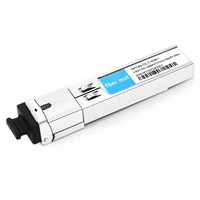In the ever-changing telecommunications field, people need faster and faster internet all the time, which is why service providers are looking for answers. GPON (Gigabit Passive Optical Network) technology is one such solution that allows for reliable delivery of high bandwidth services over fiber optic cables. This article discusses what you need to know about Calix GPON SFP (Small Form-factor Pluggable) transceiver modules, including their features, uses, and benefits in GPON systems, among other things. We hope that this detailed coverage of these important parts will help enlighten our readers more about how they can improve network performance as well as meet growing service demands from today’s customers. If you’re a network engineer or provider or just someone who loves tech, then consider yourself lucky because we’ve got everything that could ever exist in an article about GPON technology right here!
Table of Contents
ToggleWhat is a Calix GPON SFP Transceiver?
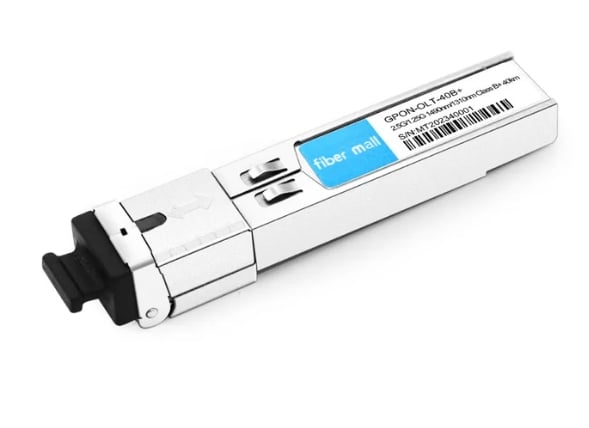
Understanding the Basics: GPON and SFP Explained
Gigabit Passive Optical Network (GPON) is a standard for passive optical networks that allows high-speed data transfer via optic fiber technology. It follows a point-to-multipoint construction in which one optical fiber serves numerous endpoints thus making better use of the infrastructure and cutting down on deployment costs. GPON provides downstream rates of up to 2.5 Gbps and upstream rates of up to 1.25 Gbps to meet increasing demands for bandwidth among consumers and businesses alike.
The SFP (Small Form-Factor Pluggable) transceiver plays an important role in GPON deployments by offering a compact and hot-swappable interface that connects network equipment with fiber optic cables. SFP modules are designed to be versatile enough to support different applications such as data communication or telecommunication systems, etc., but when used within the context of Calix GPON, SFP transceivers are optimized for optical signal transmission so they will ensure performance reliability throughout any given network infrastructure, where it is employed as part of this system type. It should be noted here again that modern fiber optics communications heavily rely on these two items together – GPON tech alongside SFP transceivers
How Does a Calix GPON SFP Transceiver Work?
A Calix GPON SFP transceiver is an optical device that changes electrical signals from network appliances into optical signals and vice versa for transmitting them through fiber optic cables. The transceiver accepts the electrical signal upon data transmission from the network and modulates it into an optical signal using a laser diode. This light is conveyed over the fiber until it reaches the subscriber’s Optical Network Terminal (ONT). On reception of this light, ONT converts it back to an electric signal which can be used by end devices. Similarly, in upstream transmission; the transceiver receives demodulates and sends back the electric signal to network equipment after receiving an optical signal from ONT. With this bidirectional communication without interruption, fast broadband service provision will be achieved as it enhances the high-speed data transfer required by modern-day demands.
Key Features of Calix GPON SFP Transceivers
Below are a number of main features that help the performance of Calix GPON SFP transceivers in fiber optic networks:
- Compatibility and versatility: These transceivers can fit with many different types of optical network equipment thus becoming part of an already existing infrastructure without any hitches. They support several wavelengths which makes them usable for different purposes.
- Fast data rates: Downstream, they have 2.5 Gbps, while upstream, they have 1.25 Gbps as their maximum speeds, although most Calix GPON SFP transceivers can reach these numbers. With this kind of ability, it becomes possible to process large amounts of information quickly something necessary for contemporary broadband services.
- Wide operational range: Since these machines work within wide temperature limits, they are able to function optimally under different environmental conditions where other devices might fail. As a result, people don’t need to buy replacements now and then thereby saving them money in the long run because their durability is also very high.
- Low power consumption: In order to reduce costs incurred during operation without sacrificing performance or reliability levels expected from them, engineers designed Calix GPON SFP transceiver modules that consume low amounts of energy but still deliver excellent results.
- Additional security features: Most models come with built-in safety measures meant for protecting transmitted data due to increasing worries about telecommunications privacy.
Their joint usefulness enhances efficiency, thereby fostering dependability. Service providers looking forward to offering quality broadband services should consider using these devices.
How do you choose the right Calix GPON SFP for your network?
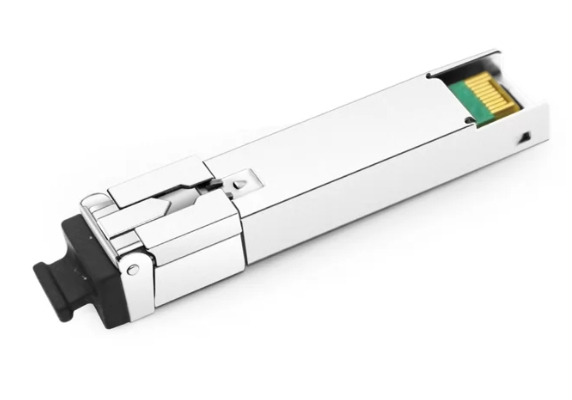
The Importance of Compatibility in GPON Networks
Compatibility is the most important factor for a successful GPON (Gigabit Passive Optical Network) architecture deployment and operation. Making sure Calix GPON SFP transceivers are compatible with existing network equipment will allow them to seamlessly integrate, reducing disruptions and enabling faster deployment. Additionally, compatibility implies compliance with relevant standards like ITU-T G.984 that ensures these transceivers can communicate well with different types of Optical Line Terminals (OLTs) and Optical Network Units (ONUs). Moreover, using components that work together well can make it easier to maintain them as a system; this also applies when updating firmware since doing so would better the network’s reliability overall. Such an evaluation not only meets current operational needs but positions operators towards being able to support future enhancements or expansions at low cost and effort.
Evaluating Key Specifications: Wavelength, Distance, and Data Rate
To ensure fast network performance, one must choose the Calix GPON SFP transceivers according to their wavelength, distance and data rate specifications.
- Wavelength: The light’s wavelength emitted by a transceiver is important because it enables transmission of data through optic fiber cables. Most GPON systems use 1310 nm for upstream transmission and 1490 nm for downstream transmission. Therefore, it is essential that you make sure your selected Calix GPON SFP has these wavelengths so as not to compromise on its performance by causing too much signal loss due to mismatching with system requirements.
- Distance: You should be concerned about how far signals can go without any amplification or regeneration required along the way when selecting an appropriate transceiver model for installation at hand – this information is usually given as maximum reach. Typically designed for standard deployments where distances do not exceed 20 km (kilometers), different types of SFP modules like those from Calix may cover various ranges depending on fiber quality, among other factors such as connectors used and presence/absence of optical splitters, etcetera. Therefore knowing what kind of range will be needed in your network helps a lot in making correct choice.
- Data Rate: It indicates how much information per unit time can be handled by device under consideration i.e., measured gigabits per second (Gbps). For example; downstream/upstream rates are usually around 2.488 Gbps /1.244 Gbps respectively for ordinary GPONs but there exist faster ones too with higher capacity if necessary even beyond 10 Gigabits Ethernet (10GE) level…thus one should take into account bandwidth requirements imposed upon us by our subscribers while choosing appropriate models capable satisfying current future demands efficiently thus leading increased productivity overall success within organization setup itself…
These criteria should help operators know which Calix GPON SFP transceivers are best suited to achieving dependable and high-speed broadband connectivity in their networks.
Comparing Calix GPON SFP Models: What to Look For?
Several important factors should be considered when comparing different Calix GPON SFP models to ensure the best performance of the network:
- Compatibility: You must make sure that the chosen SFP model is compatible with your current GPON equipment and network architecture. It should meet certain standards and manufacturer’s requirements.
- Operational Range: Each model has its own maximum operational range that needs to be evaluated. The effective transmission distance capabilities may differ among various Calix GPON SFP models which is critical in terms of network topology matching.
- Power Consumption: Another rating that should be considered while choosing between models is power consumption. This feature affects general energy costs and environmental friendliness. Using devices with lower power consumption can often achieve sustainable network operation.
- Environmental Ratings: To guarantee stable operation in a particular deployment environment one should check such specifications as temperature ranges or humidity tolerances against them listed for a given product by its manufacturer.
- Warranty And Support: Network operators should think about long-term operational reliability when selecting between warranties offered along with support packages provided by manufacturers during purchase process because it really matters for peace of mind too much especially if we talk about large networks where many things could go wrong over time without any notice at all sometimes only discovered after some catastrophic event has taken place already then it becomes too late for crying out loud why didn’t I buy more coverage?
These considerations will enable service providers, system integrators, and enterprise IT managers to choose among various Calix GPON SFP models based on what best suits their needs.
How to Install Calix GPON SFP Transceivers?
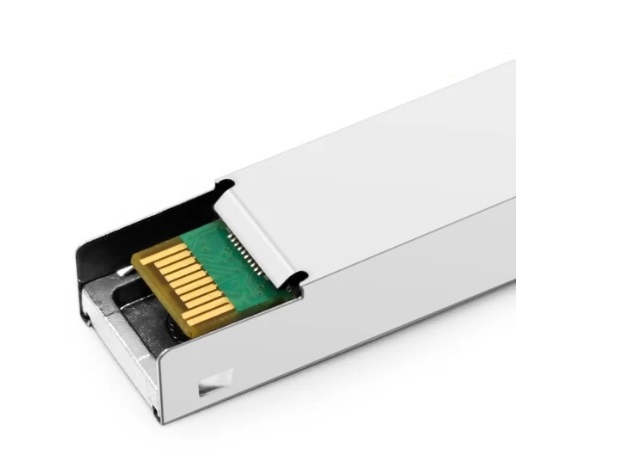
Step-by-Step Installation Guide
- Safety Measures: Make sure you take all the safety precautions before starting with the installation. Turn off power to GPON equipment to avoid electrical accidents.
- Collect Required Tools: You will need certain tools such as a flathead screwdriver, anti-static wrist strap and cleaning agents for SFP ports.
- Remove Old SFP Module: If applicable, softly pull back on release latch of existing sfp module then remove it from slot without causing any damage to it.
- Examine New SFP Module: Inspect the new Calix GPON SFP module for physical damages and ensure that it is clean and free from dust.
- Insert Replacement SFP Module: Align sfp module with slot, taking care that connector faces towards correct side then gently push until clicks into place or seats firmly enough.
- Restore Power Supply: Once you have fixed this device well reconnect power back into GPON equipment again .
- Check Operation Status: Watch network status indicators in order to be sure that the new sfp module has been detected successfully then test operational functionality .
- Record Installation Process: Write down all necessary information about the installation like model number used and anything abnormal noticed during this exercise for future reference.
Common Installation Issues and How to Resolve Them
- Module Not Identified: If the new SFP module is not recognized, start by making sure it is correctly inserted into the slot. Take out the module and reinsert it making sure it clicks into place. Also check for GPON equipment firmware compatibility.
- Inactive Link Light: If the link light fails to come on after installation, confirm that the fiber cable is connected properly to the SFP module and that it’s in good working condition. Also, look for any physical damage on connectors or cables.
- Weak Signal Quality: When signal quality drops, you should clean SFP ports and fiber connectors to see if this would help. Use the right cleaning tools to dust off or remove dirt from such places as required. Additionally, ensure correct cable type and length are used as per specifications provided.
- Overheating: Make certain that SFP modules have been installed where there is adequate ventilation around them and no other devices nearby exceed their heat limits; if they do so then consider changing overheat resistant modules.
- Compatibility Problems: If all precautions fail but still new model does not work with anything else, consult Calix’s or your vendor’s compatibility chart for suitable GPON equipment models selection.
Best Practices for Maintaining Optimal Performance
- Continuous Monitoring: Continuously monitor the quality of the signals and link status so that problems can be detected early. Wherever possible, implement automated alerts that will notify staff members about potential issues.
- Environmental Control: Ensure that the area of equipment installation has stable temperature as well as humidity levels. Use racks and enclosures with good airflow management capability to prevent overheating.
- Cleaning on a Regular Basis: Sometimes inspect SFP ports together with fiber connectors. Always use lint-free wipes plus appropriate cleaning solutions to make sure all optical connections remain free from dirt particles.
- Recording and Documenting: Record everything! Make detailed notes about installations done; any maintenance carried out should also be recorded alongside encountered challenges or issues faced when trying to fix them. Such information will serve as a useful guide for troubleshooting purposes in the future while optimizing performance
- Firmware Upgrade: It is necessary to regularly check for firmware updates provided by manufacturers and install them accordingly. This ensures that current software versions improve the compatibility, security, and general functionality of devices.
What are the Benefits of Using Calyx GPON SFP Transceivers?
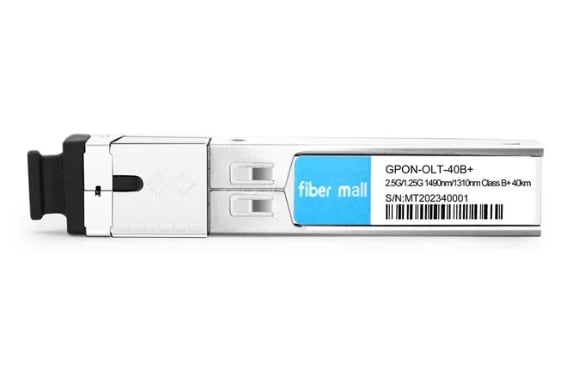
Performance Advantages of Calyx Transceivers
Calix GPON SFP transceivers are designed to provide superior performance features that are necessary for high-speed data transmission. Such converters support higher data rates and lower latency, thereby making them perfect for applications, which require a lot of bandwidth. They also have integrated thermal management systems that save power and prevent overheating thus increasing the lifetime of networking devices. These transmitters can be easily integrated into many types of fiber optic networks therefore reducing downtime during installation because they work well with different optical systems created by various manufacturers. Moreover, their sturdy design guarantees dependability in different environmental conditions so they will perform reliably even under difficult operational circumstances.
Cost Savings and Efficiency
Network operators can save a lot of costs and enhance efficiency by using Calix GPON SFP transceivers. These organizations can lower the frequency of hardware upgrades required and associated expenses by making use of high data transfer speeds delivered by these modules. Another way that Calix saves on costs is through power saving since its transceivers are efficient in terms of energy consumed which leads to reduced operational expenses in the long run. Moreover, simplicity brought about by this type of device, when integrated into networks alongside ease in design, contributes towards faster deployments that save time spent on maintenance, thus lowering labor costs as well. Ultimately, investing in Calix GPON SFP transceivers provides appealing ROI through improved overall network performance coupled with decreased CAPEX and OPEX.
Enhancing Network Reliability with Calix GPON SFP
Various functions of Calix GPON SFP modules can greatly enhance network stability. Firstly, these modules follow strict industry criteria so that they can work well with different optical network technologies. This avoids communication breakdowns. Secondly, their strong build incorporates advanced error correction measures, which fix data transmission errors instantly, thus ensuring the integrity of information. Moreover, built-in diagnostics on Calix transceivers allow for proactive monitoring of network performance, enabling operators to detect and deal with potential problems before they cause downtime. With Calix GPON SFP transceivers, service providers will not only see improvements in service quality but also a decrease in the number of outages leading to more robust network foundations.
Frequently Asked Questions About Calyx GPON SFP Transceivers
Can Calix GPON SFP Transceivers be used with Other Brands?
Certainly, numerous other firms’ devices can work with Calix GPON SFP transceivers. They are made in such a way that meets industry standards like ITU-T G.987 and G.984 so as to enable them to interoperate effectively with various vendors’ optical network infrastructure. Nonetheless, compatibility is not always an absolute guarantee hence operators should verify this by checking with their suppliers on certain interoperability claims they might have received about these transceivers; also if used alongside non-calix equipment different performance may be experienced thus it would be prudent for operators to test them adequately before deploying in any particular network architecture ensuring stable operations.
What is the Expected Lifespan of a Calix GPON SFP Transceiver?
Usually, Calix GPON SFP transceivers are meant to last from 5 years minimum up to 10 years. However, many things influence this duration; these include conditions of use, environmental factors and usage frequency. There is a need for proper installation and maintenance for them to last long enough. In case they were under perfect conditions where there is good heat control as well as protection against dirt or dust, then it can be expected that such devices would work perfectly even after ten years. Another thing that should not be forgotten about is checking performance indicators regularly so as to detect any abnormality earlier enough, thereby giving room for replacement if necessary, according to those who operate them.
How do we ensure TAA compliance with Calyx GPON SFP?
There are a number of key steps to ensuring Trade Agreements Act compliance with Calix GPON SFP transceivers. Primarily, it is important to establish whether the products are created in the U.S. or another TAA-designated country (as stated by them). This data can often be found within product specifications or other documentation that Calix provides. Next, purchasing from a reliable supplier who includes TAA compliance as part of their contractual agreement can help to mitigate risks associated with noncompliance. In addition, it may be necessary for organizations to conduct regular audits and assessments throughout their supply chain so as to ensure all components meet TAA requirements at any given time. Finally, keeping detailed records about all procurement activities will provide evidence when required during government agency audits, which prove you were in compliance with this law at every point along the way; these things together enable enterprises to integrate Calix GPON SFP transceivers into their network infrastructure while still supporting trade agreements act standards.
Reference Sources
Frequently Asked Questions (FAQs)
Q: Definition of Calix GPON SFP transceiver module
A: A small form-factor pluggable (SFP) device used in passive optical networks is known as a calyx GPON SFP transceiver module. These modules are indispensable for high-speed broadband access by connecting optical line terminals (OLTs) to optical network units (ONUs).
Q: How does a GPON transceiver module work in a PON network?
A: The operation of a GPON transceiver module is based on the transmission and reception of optical signals through single-mode fiber (SMF). For bidirectional data transfer in a GPON network, different wavelengths are used, such as 1490nm for downstream (TX) and 1310nm for upstream (RX).
Q: Are Calyx GPON SFP modules compatible with different OLTs?
A: Yes, calyx GPON SFP modules are OEM compatible and can work with various brands of GPON OLTs. To avoid any compatibility issues, always ensure that you choose the right model for your OLT.
Q: What is the maximum range of transmission distance for Calix GPON SFP modules?
A: Normally, calyx GPON SFP modules support transmission distances up to 20km over single-mode fiber. However, some advanced models can achieve distances of 40km or even 60km.
Q: What are the standard optical interfaces on a GPON SFP transceiver?
A: SC or LC connectors are usually among the standard optical interfaces on a GPON SFP transceiver, allowing easy connections to SMFs. These interfaces play an important role in ensuring seamless transmission of optical signals.
Q: How does DDM support the use of GPON SFP transceiver modules?
A: Digital diagnostic monitoring (DDM) provides real-time access to important operating parameters, including temperature, voltage, and optical power levels. This feature helps ensure that transceiver modules work efficiently.
Q: Can a calyx GPON SFP be used in extreme temperatures?
A: Yes, some models of calyx GPON SFP transceivers are designed for operation within a temperature range of -40 to 85 °C, which makes them suitable for different environmental conditions, such as industrial-grade applications.
Q: What are the benefits of GPON OLT SFP transceivers in a network?
A: Using GPON OLT SFP transceivers has several advantages, including high bandwidth efficiency, cost-effective network expansion, and simplified maintenance. These advantages reduce operational costs while providing strong broadband services.
Q: Do calyx GPON SFP transceivers comply with industry standards?
A: Absolutely. Calix GPON SFP transceivers adhere to industry standards, such as TAA compliance and various GPON protocols. This compliance guarantees reliability and interoperability with other elements within the network.
Q: How do Calyx GPON SFP transceivers help scale a broadband network?
A: In scaling broadband networks, Calix GPON SFP Transcenders provide very dense connections that allow for efficient bandwidth management. Thus, they enable seamless upgrades into next-generation PONS such as XGS-PON and NG-PON2, which ensures future-proofing network infrastructures.

